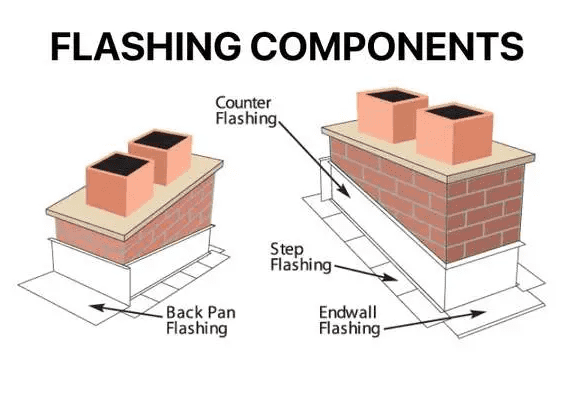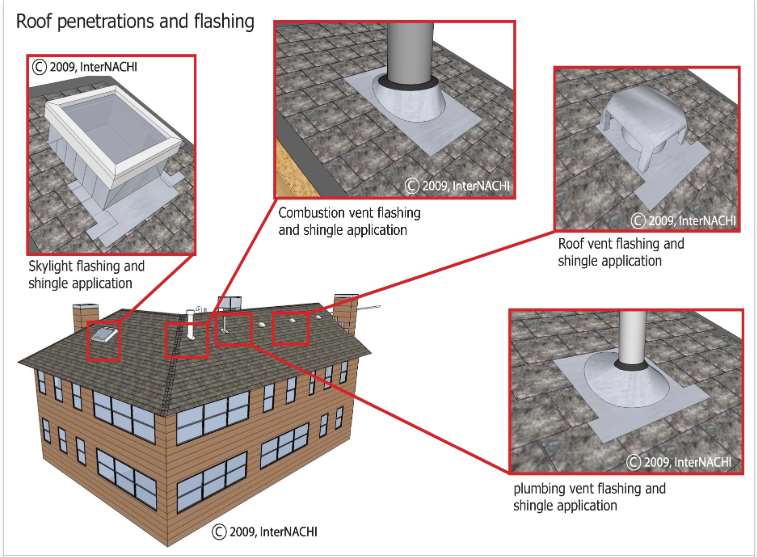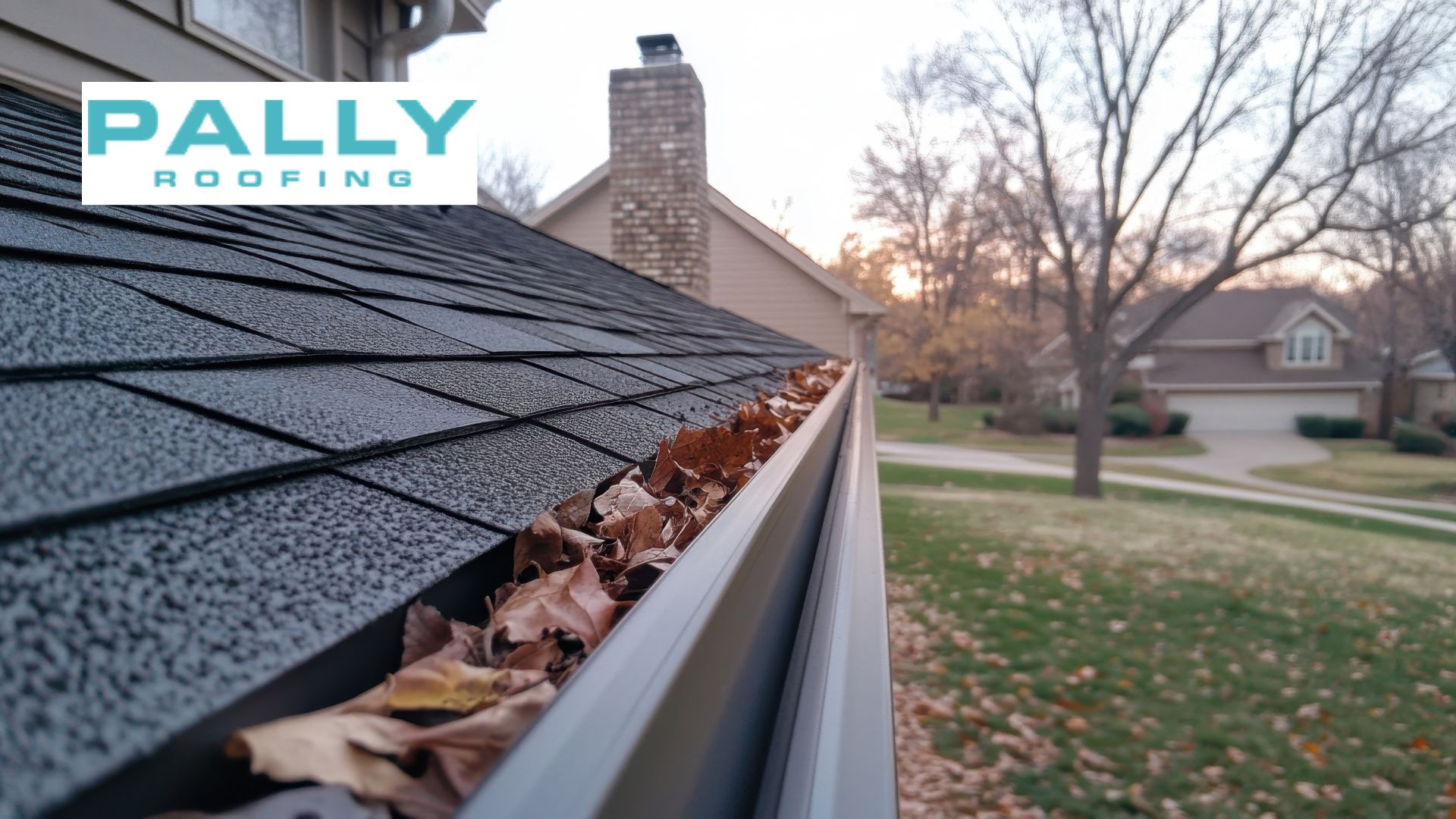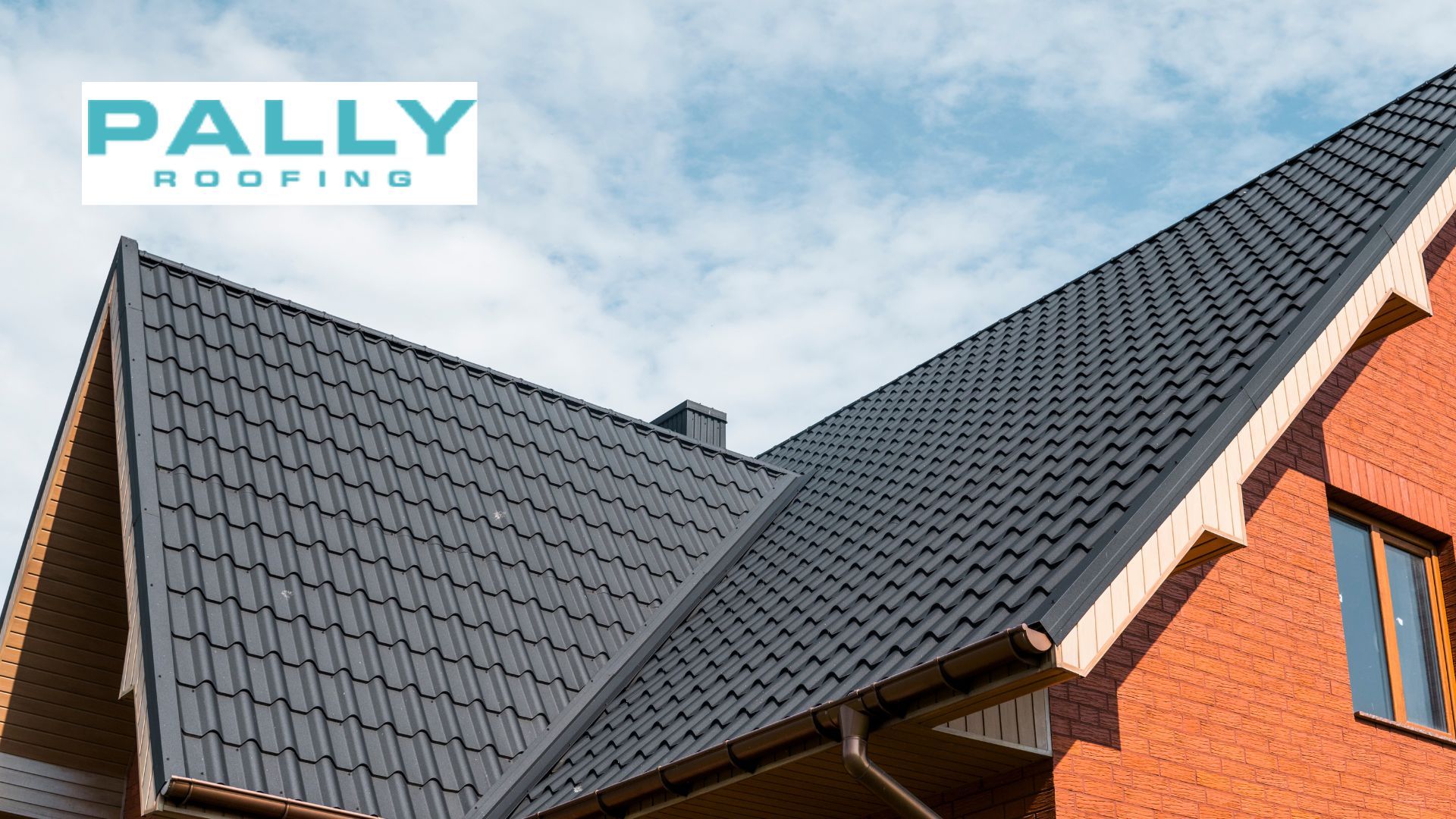Roof flashing: what’s behind it? A critical component of a roofing system is its ability to prevent water infiltration.
This element is specifically designed to secure vulnerable areas such as chimneys, vents, and roof valleys, thereby enhancing the overall integrity and durability of the roof.
Table of Contents
Roof flashing installation stops leaks and makes your roof last longer; regular maintenance is necessary. For homeowners needing the best roofing services in the USA, hire experienced contractors like Pally Roofing, which provides long-lasting quality and helps you feel secure.

Source: litespeedconstruction
What is Roof Flashing?

Source: nachi
Roof flashing material is waterproof, like metal flashing on the roof; materials like aluminum, copper, or galvanized steel protect joints and intersections. These durable roof flashing materials seal properly to protect against moisture.
Common Applications of Roof Flashing
- Chimneys: Stop water from leaking at the base.
- Skylights: Seal the edges to stop water from getting in.
- Valleys: Direct water away from roof-to-roof flashing intersections.
- Wall Flashing on a Roof: It protects the area where the roof meets the walls.
- Vent Pipes: Make sure there are watertight seals around any growths.
Types of Roof Flashing
Roof flashing is important for keeping your roof in good condition. It helps channel water away from areas where it might leak in. Here are the most common types of roof flashing and what they do:

Source: media.angi
1. Step Flashing:
What is step flashing on a roof? This method uses overlapping sections to create a seal where the roof meets the walls. Common for flashing roof-to-wall situations and step flashing roof-to-wall applications.
2. Continuous Flashing:
Flashing is used at the edges of a roof where a wall or chimney meets the roof. It creates a continuous barrier that stops water from entering the gaps between the roof and the structure. It’s ideal for roof-to-wall flashing installation and protects against water ingress.
3. Drip Edge Flashing:
Drip edges on the roof prevent water from flowing under shingles, protecting the roof edge.
4. Valley Flashing:
It is important for roof joint flashing at intersecting planes, as it channels water safely away.
5. Commercial Roof Flashing:
This type is designed for flat or large roofs and uses special techniques for flashing a flat roof to a vertical wall.
Benefits of Roof Flashing
- Leak Prevention: Stops water from leaking in.
- Extended Roof Life: Reduces the wear on shingles and other roofing materials.
- Cost Savings: Prevent costly water damage repairs.
- Structural Protection: Helps prevent foundational problems caused by leaks.
Pally Roofing for Roof Flashing Services
As one of the most experienced roofing contractors in Ohio, USA, Pally Roofing offers the:
- Affordable Roof Flashing Installation: We provide high-quality results at competitive prices.
- Expert Roof Flashing Repair Services in the USA: Skilled technicians manage all aspects of the work, from roof flashing replacement to maintenance.
- Free Inspections: Identify issues like flashing around the roof or shingle roof flashing problems early.
- Comprehensive Services: We offer customized solutions, from cricket roof framing for chimneys to flashing gable roofs to walls.
Pally Roofing Process: From Inspection to Installation
- Thorough Evaluation: Identify areas needing roof flashing repair or replacement.
- Material Recommendation: Suggest the most suitable metal flashing on the roof. When choosing materials, focus on their durability and cost.
- Precision Installation: Ensure proper sealing for roof-to-wall flashing installation and flashing roof-to-wall connections.
- Post-Service Support: Here are some tips for keeping well-maintained flashings on a roof and preventing issues like roof water damage solutions.
Common Roof Flashing Issues and Solutions
- Poor Installation:
Improperly installed flashing creates gaps that can lead to leaks. Pally Roofing can install it correctly with roof flashing install services.
- Rust or Damage:
Weather can cause damage to roof flashing materials over time. Routine inspections are important, especially in areas with heavy rain or snow. They help find and fix damage quickly.
Expert roof flashing repair services in the USA can address these problems and prevent further issues.
What Are The Signs Of Damaged Roof Flashing?
Here is a concise summary of the signs of damaged roof flashing:
- Look for cracks, holes, or loose flashing.
- Check for rust or corrosion on the flashing material.
- Ensure there is caulk or sealant around the flashing.
- Watch for water stains or damage on walls or ceilings inside.
- Check for lifted, curled, or buckled shingles near the flashing.
- Look for excessive granule loss on shingles around the flashing.
Conclusion: Protect Your Home with Pally Roofing
What is roof flashing, and why is it important? It protects your home from water damage, mold, and problems with its structure. Proper roof flashing installation and regular maintenance are vital to avoid costly repairs.
Choose Pally Roofing, a trusted name in the best roofing services in the USA, for all your flashing needs, whether it’s Lowes roof flashing, commercial roof flashing, or flashing a roof to a wall.
“Get affordable and reliable roof flashing solutions today! Contact Pally Roofing for a free inspection and trusted professional service.”
Frequently Asked Questions
What Is The Purpose Of Roof Flashing?
Roof flashing prevents water leakage at a roof’s joints, seams, and penetrations. It directs water away from these vulnerable areas to protect the underlying structure from damage.
What Materials Are Commonly Used For Roof Flashing?
Most roof flashings are made of aluminum, copper, or galvanized steel. Each material has pros and cons regarding durability, cost, and compatibility with different roofing materials.
How Often Should Roof Flashing Be Inspected And Maintained?
At least once a year, ideally before and after the rainy season, roof flashing should be inspected. Any signs of rust, damage, or loss should be repaired quickly to stop flooding.
What Are The Familiar Sources Of Roof Flashing Leaks?
Flashing leaks are frequently the result of poor installation, damage with age, or weather-related damage. Flashing leaks can also be caused by incorrect installation, rust, and improper sealing.
Can Roof Flashing Be Repaired Or Replaced?
Repairing damaged or damaged roof flashing usually involves installing new flashing pieces, repairing holes, or sealing again joints. To maintain the roof’s strength, the flashing should be replaced if it cannot be repaired.
What Does Flashing Do On A Roof?
It prevents water from seeping into joints and intersections, safeguarding your home.
What Is Roof Flashing, And Why Is It Important?
Flashing in roof construction protects your roof and home from leaks and water damage.
How Do I Figure Out How Many Roof Flashings I Need?
A professional inspection calculates the material needed for chimneys, skylights, and roof-to-roof flashing.
Author
-

With more than 16 years of hands-on experience, Phillip Schmucker is the knowledgeable owner of Pally Roofing. His dedication to superior roofing services has earned him a reputable place in the industry. Phillip also shares his extensive expertise through writing, providing readers with practical tips and professional advice on various roofing topics. Follow him on LinkedIn.
View all posts






